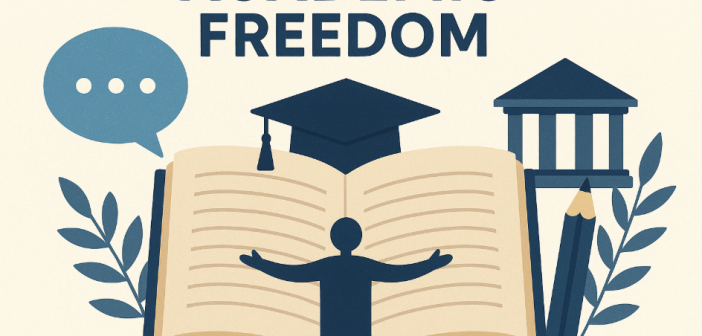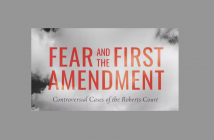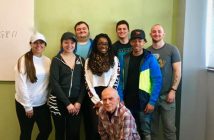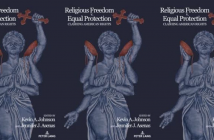LESSONS FROM STUDYING ACADEMIC FREEDOM
Many materials for faculty are often cumbersome and take the form of being a list of “thou shalt nots” instead of a list of things we CAN do and that generally offer a high degree of protection. Thus, the aim of this list is to affirm some practices that make it more likely that we are protected from disciplinary actions and legal troubles in exercising academic freedom in our learning environment. In the context of myriad disciplinary actions and lawsuits against faculty across the nation, there is much concern about the many things that we cannot or should not do. I want to attempt to make a helpful list of things that we CAN do to increase the odds that our actions don’t cause unnecessary hardship. THESE ITEMS DO NOT PROTECT YOU 100% LEGALLY—THEY ARE MERELY THINGS THAT TEND TO AVERT LEGAL PROBLEMS. Thus, in consultation with other scholars on the First Amendment and academic freedom, I wanted to extended a list that will hopefully help us be more protected in exercising academic freedom:
Helpful Practices Abridged:
- Stay Within the Curriculum.
- Cite Academic Works Instead of Personal Opinion Whenever Possible.
- Cite Professional Opinions Based on Available Evidence.
- Use Housekeeping Time to Facilitate the Learning Environment.
- Read the Time, Place, Manner Regulations for Our Campus.
- Read Original Source Material on Academic Freedom.
- If in Doubt, Prior Consultation is Best.
Helpful Practices Explained:
- Stay Within the Curriculum. Teaching curricular materials is protected speech. Staying in the curriculum is a good way to avoid the captive audience doctrine or charges of indoctrination. Of course, this includes the material explicitly stated in the standard course outline for the course and in the syllabus for the course. The standard course outline gives you a can to rattle around in. Your syllabus should be more specific. However, this also includes teaching material that is in the curriculum and there are many pedagogical tools to teach, including linkages to current events to highlight the relevance of concepts to recent events. So, for example, if the curriculum calls for teaching Dickens, you would be able to compare a Dickens character to someone in the contemporary political sphere as an example. However, merely going on a tangent about your political commentary without linkages to Dickens is likely to be subject to issues of the captive audience doctrine. All examples, case studies, etc. should be relevant to the standard course outline.
- Cite Academic Works. While it may be protected in many cases to cite personal opinion, better protection is afforded to citing other academic works that may make the same point you may agree with. For example, if you are teaching subject matter on feminist politics, and you agree with critiques of white supremacist capitalist patriarchy, it is likely to be more protected to say something like, “belle hooks’ work suggests X. What would your answer be to hooks’ argument regarding X?” This is likely to be more protected than something like, “you are wrong and need to agree with my idea that X.” Citing other people’s works is generally protected—especially if the works you are citing go through the peer review process. Most arguments that are taught in the undergraduate classroom may be found in academic works already published. Fair use of material and in scholarly work is protected by copyright law.
- Cite Professional Opinions Based on Available Evidence. In many cases, scholars are asked for their professional opinions. Students., for example, often ask questions that are undetermined—especially on recent technological issues, for example. This is inherent in the practice of pedagogy. One of the reasons that the medical profession is called a medical practice is because it is ongoing. Medical doctors are asked for “second opinions,” for example. When citing your professional opinion on an issue, state explicitly that you are doing so. A phrase that begins with, “Based on my professional opinion from the available evidence I have reviewed…” This kind of phrase marks the explicit idea that you are willing to entertain future evidence that may change your opinion based on further evidence that my present to you.
- Use Housekeeping Time to Facilitate the Learning Environment. The “learning environment” is broadly defined, and there may be issues happening outside your classroom that are distracting to students when they are actually inside your classroom. If you are in a position to help facilitate conversation about those issues at the beginning of class, then you may be protected so long as it does not take more than 5-10 minutes of class time. There was a recent Supreme Court case (BL v. Mahanoy) where a cheerleader was kicked off the team for remarks she made off campus on social media. The Court protected the student’s speech. Part of the issue was that the school argued they could punish the student because, in part, there was a disruption to the learning environment—the cheerleading coach was also a math teacher and the subject of the cheer drama had been discussed in algebra class for 5-10 minutes a couple of days.[i] The coach talked about the drama for 5-10 minutes with students in order to turn it into a teachable moment generally (even if not related to algebra, some students clearly had it on their mind and addressing it may help transition to the algebra lesson). Thus, if students are distracted by issues outside the class to the point where the “learning environment” is affected, then the teacher can attempt to address those issues for a brief period. The distraction should be student driven in order to attempt a resolution of it. A faculty member should probably not bring an issue up on their own without students expressing something that may rise to an important teachable moment. Even so, if in doubt, you should probably refer students to the best authorities most qualified to discuss the issue at hand. The learning environment is roughly akin to a workplace and so many rules that apply to the workplace also may apply to the learning environment. Bullying and other forms of harassment interfere with a person’s ability to do their job and to accomplish tasks in the learning environment. At best they are distractions, worse they can lead to legal action.
- Read the Time, Place, Manner Regulations for our Campus. Part of the practical problem with time, place, manner regulations is that those that are controversial speakers that come to campus are often professionally paid, and who receive extensive training and extensive knowledge in knowing the EXACT boundaries of protected speech generally, and in the context of time, place, manner regulations specifically. The result is often that students and faculty are the ones who end up being arrested for violating those policies even as those policies are originally enacted to protect students, faculty, and the learning environment. The time, place, manner regulations may be found here: https://www.csulb.edu/student-affairs/campus-rules-and-regulations/regulation-i#:~:text=The%20time%2C%20place%20and%20manner%20policy%20exists%20to%20protect%20and,and%20CSULB%20policies%20and%20regulation.
- Know Where Resources are about Academic Freedom. Similar to the concerns about having access to complicated sets of information, you can always refer students to our resources on campus concerning free speech and academic freedom. A couple of quick resources, for example, may be found on the Division of Student Affairs site: https://www.csulb.edu/student-affairs/free-speech/faq, at the Center for First Amendment Studies website http://firstamendmentstudies.org/, and at the AAUP site https://www.aaup.org/our-work/protecting-academic-freedom
- If in Doubt, Prior Consultation is Best Protection. There are several places on campus to turn to for consultation if you are looking to step outside these practices and you are looking to be protected from repercussions to the best extent possible. For example, you may consult with leadership in the College of Liberal Arts, university legal counsel, the Center for First Amendment Studies, University Police, and other relevant parties on campus (experts in your field, etc.). Early warning can be an important factor in protecting your speech. For example, in Tinker v. Des Moines, the Tinkers notified administrators well in advance about what they were attempting to accomplish by wearing black armbands to school in protest of the Vietnam War. Administrators did not have any ambiguity about the intentions of the “speakers.” The Court protected the speech in part because the intentions were documented well in advance (and because it didn’t materially disrupt the learning environment). However, in Morse v. Frederick, a student did not garner protection for a banner saying “Bong Hits 4 Jesus” because it was unfurled in a moments notice during an Olympic torch relay. In part, the Court ruled because it needed to be interpreted in a moment’s notice by administrators, the Court gave deference to a “reasonable interpretation” by the administration. In short, consulting multiple parties will likely allow you to make an informed decision regarding any potential risks you would like to take in your speech acts.
By,
Kevin A. Johnson, Ph.D.
Director, Center for First Amendment Studies
[i] According to the opinion of the Court, pages 10-11, “the school argues that it was trying to prevent disruption, if not within the classroom, then within the bounds of a school-sponsored extracurricular activity. But we can find no evidence in the record of the sort of “substantial disruption” of a school activity or a threatened harm to the rights of others that might justify the school’s action. Tinker, 393 U. S., at 514. Rather, the record shows that discussion of the matter took, at most, 5 to 10 minutes of an Algebra class “for just a couple of days” and that some members of the cheerleading team were “upset” about the content of B. L.’s Snapchats. App. 82–83. But when one of B. L.’s coaches was asked directly if she had “any reason to think that this particular incident would disrupt class or school activities other than the fact that kids kept asking . . . about it,” she responded simply, “No.” Id., at 84. As we said in Tinker, “for the State in the person of school officials to justify prohibition of a particular expression of opinion, it must be able to show that its action was caused by something more than a mere desire to avoid the discomfort and unpleasantness that always accompany an unpopular viewpoint.” 393 U. S., at 509. The alleged disturbance does not meet Tinker’s demanding standard.
The author of this essay would like to thank members of the Freedom of Expression Division of the National Communication Association, members of the Center for First Amendment Studies, and friends of the Center for their input in the essay.




